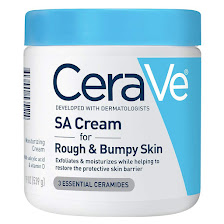Living in My Skin
Ackerman makes it apparent that our skin, the largest organ of the body, is the only part of us that makes contact with the outside world. We spend countless hours and contribute hundreds of dollars throughout our lives making our skin soft, smooth, covered with art, even pierced or stretched. It is the extension of our personalities, a way to express ourselves visually to others. For me and around 50% of the global population, the skin is covered with rough patches and small bumps particularly on the upper arms and thighs, though it can also cover the cheeks and the rear. It’s the result of a harmless skin condition called keratosis pilaris and can be considered a common variant of skin type.
It doesn’t bother me much other than the way it looks to others. The bumps are dark-ish red, mostly flush to the skin, and appear as thousands of evenly dotted circles. They’re caused by the excess production of keratin by the body, which blocks hair follicles from emerging. It’s something I always remember having. As a kid, running my hands over my arms, their bumpiness was apparent to me but not significant. It wasn’t until I began to grow older that I began to feel slightly self-conscious about my skin. Why was mine this way, when the skin of others, especially of those in commercials and advertisements, was so normal?
I asked my mother, and we consulted my doctor (of course she didn’t want me to be self-conscious about any characteristic of myself whether trivial or large) who gave me the keratosis pilaris “diagnosis” (I put this in quotes because of how common the condition really is.) My mom and I immediately went to search for a treatment, some topical lotion, skin scrub, or any cosmetic from our Walmart to possibly solve the issue.
(images left to right: SkinStore.com, Amazon)
I have been testing all kinds of different products since then, although ultimately I decide they do not work and throw them in the closet to live out the rest of their lives. None of these products have made much of a difference in the appearance and texture of my skin, frustration felt among those that suffer from–in my opinion–more difficult skin conditions, such as acne, eczema, or topical steroid withdrawal.
At the end of it all, it matters not how those around you perceive your skin, but the degree to which you feel comfortable in it. I know it's cliché, but it is a turn of phrase which I have come to agree with when it comes to my own body.




What great observations about really living in our own skins! As a fair-skinned person susceptible to basal cell cancer, I have to constantly monitor my pre-cancerous skin conditions, and have developed quite a long-term relationship with my dermatologist! ;-) Indeed, you may have noticed my latest treatment of pre-cancerous actinic keratosis marring my face (hence the wide-brimmed hat I've been wearing, which I bought on the recommendation of my dermatologist many years ago to avoid direct sun exposure.) But what really resonates for me about your post is how much our awareness of our skins affects at our everyday lives and awareness (at least for some of us). And also, it's not only through touch that our skins interface , interact , and in general _connect_us with our environments. It's also how we _see_ it, and imagine how others see our skins.
ReplyDeleteDana, I love and relate to your post so much! As someone who has spent many a day stuck in the dermatologists office, trying everything from pills to creams to washes, I understand how frustrating and complicated our relationship with our skin can be! I love the ending of your post, and I totally agree as this relationship between ourselves and our body is a journey- one that is always evolving and developing.
ReplyDelete